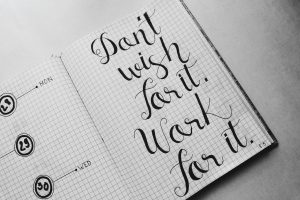Mastering Interviews with the STAR Method
Ace your next interview by giving the STAR Method a whirl. This approach isn’t just a fancy acronym; it’s a game-changer for knocking those tricky interview questions out of the park. Let’s break it down and see why it’s worth your time.
What is the STAR Method?
So, STAR stands for Situation, Task, Action, and Result. It’s your secret weapon for giving answers that stick. Imagine you’re telling a story, but with a clear roadmap. Each part of STAR helps you cover all your bases: describe what was going on (Situation), your role in it (Task), what you did (Action), and why it mattered (Result). This little formula makes sure you’re giving answers that are as neat as a new pin and really show off what you’re made of.
Why Bother with the STAR Method?
Using STAR isn’t just about looking polished—it’s about getting your point across and leaving the right impression. Here’s the deal: it helps you keep your answers tidy and on track. When you use STAR, you end up with examples that hit home, showing exactly why you’re the person for the job without getting lost in the weeds.
The magic is in the details. STAR helps you put a spotlight on your triumphs, showing how you tackled hurdles and brought home the bacon. It’s not just about what you did, but how you did it, highlighting your knack for solving problems with style and flair.
Plus, sticking to STAR keeps you from wandering too far off-topic. You stay focused, deliver crisp answers, and make sure your key points come across loud and clear. No guessing games or filler—just you, shining bright with a story that is as easy to follow as a nursery rhyme.
Get a handle on STAR and you’ll stroll into that interview room ready to dazzle. Want to dive deeper into this handy technique? Check out our nifty piece on star technique for interviews.
Breaking Down the STAR Method
Nailing interviews often boils down to cracking the STAR Method. This handy trick involves slicing your answers into four key bits: Situation, Task, Action, and Result. Here, you’ll find what’s what about the STAR Method – Setting the Context, Clarifying Your Role and Responsibilities, and Describing Your Actions.
Situation: Setting the Context
Start by painting a picture of the situation you found yourself in. Give a quick scoop on what was up, like the problems or hurdles you were staring down. This stuff helps the person across the table get where you’re coming from, like putting them right there with you.
You’ve gotta get this bit right; it’s the launch pad for the rest of your answer. Make it clear but don’t waffle. Set the scene so the interviewer knows what was going on without drowning them in details.
Task: Clarifying Your Role and Responsibilities
Once you’ve got the scene laid out, it’s time to drop the deets about what your job was in this setup. Spell out what was expected of you and the chores you were juggling to fit the puzzle.
Explaining your spot in the situation highlights how you roll when the pressure’s on. It also peels back the curtain on how you make decisions and dream up plans to squash the problem.
Action: Describing Your Actions
With the place and your part in it sorted, now it’s about spilling the beans on what you actually did. This is the nitty-gritty of the STAR Method, where you break down the moves you made to get things done.
Here’s your chance to shine a light on the tactics you chose, the know-how you drew from, and why you thought your path was the best one. Share snapshots of your game plan, showing your knack for tackling obstacles and making stuff happen.
Getting the hang of the STAR Method, right from teeing up the context to walking through your role and actions, can turbocharge how you perform in interviews. Lining up your responses this way shows off your smarts, experience, and how you deal with sticky spots like a pro. Just remember, it’s all about prepping and practicing to work the STAR Method magic when the spotlight’s on.
Implementing the STAR Method Effectively
When rocking the STAR method in interviews, you’ve got to hit the sweet spot of showcasing your skills and experiences without being too robotic. Get personal, match your chat to the gig’s needs, and keep it short and sweet—golden rules for acing that STAR method!
Tailoring Your Responses to the Job Requirements
The secret sauce of the STAR method? It’s all about making your responses vibe with the job’s needs. Before you even step into that interview room, give the job ad a good read. Scope out the skills and traits they’re hungry for. Match your stories to what the employer’s after, and you’ll prove you’re the one for the job.
By zooming in on experiences that fit, you’ll not only flaunt your awesomeness but show the hiring boss you get what they’re after. Being this tuned-in means you’re not just another face in the crowd—you’re the one ready for the win.
Crafting Clear and Concise Responses
Being clear and snapping to the point makes your STAR method work double-time. When you’re hit with those tricky behavioral questions, the STAR way helps you keep it straight. Don’t wander off with random facts, though—that’ll water down your message.
Getting your answers clear and on track shows you know how to talk the talk without losing anyone in the weeds. It’s about letting your stories shine and driving home why they matter. Remember, hit hard with just enough detail to paint the picture, without losing your audience in a sea of words.
By spinning your stories to fit the gig and keeping them sharp and punchy, you’ll nail your interviews and get noticed. This isn’t just about using STAR like a pro; it’s your way to show you’re the perfect fit. Get more tips on owning your STAR method with our star method interview examples.
Examples of Using the STAR Method
So, interviews got you sweating bullets? Worry not! Mastering the STAR Method is your ace up the sleeve. This neat trick helps you deliver tales of triumph and tenacity in interviews that paint you as both competent and charismatic. Here, we’ll peek at sample questions and how to rock the STAR Method.
Sample Interview Questions
Employers love behavioral questions to size up your past escapades at work. They’re fishing for gripping stories where you’ve wrestled with workplace dragons and emerged victorious. Here’s a lineup of questions perfect for STAR storytelling:
| Interview Question | Description |
|---|---|
| Can you describe a time when you had to handle a challenging project? | They’re sniffing out your heroics in problem-solving and steering projects. |
| Tell me about a situation where you successfully resolved a conflict within a team. | This wants to gauge your gift of gab and peacekeeping prowess. |
| Share an example of a time when you took initiative to improve a process at work. | They’re keen to see your knack for shaking things up and making them better. |
Getting these stories straight with STAR helps you shine without going off the rails. For tips on nailing these behavioral curveballs, look up our write-up on behavioral interview questions STAR Method.
Demonstrating the STAR Method in Practice
Showcasing the STAR Method is all about painting the picture clearly and cutting the fluff. Here’s how you do it:
-
Situation: Kick off by setting the stage. What’s the story? A quick snapshot of the scenario sets your tale into motion.
-
Task: What’s the mission? Spell out your role in this plot. What mountain did you have to climb here?
-
Action: Now, get to the action-packed part—what did you do? Shine the spotlight on your moves, decisions, and how you tackled the beast.
-
Result: Wrap it up with fireworks! Share how your actions saved the day. What did you learn or change? How did it help in your career?
Keeping this framework in mind helps you dazzle without losing the plot. Plug in real tales that flaunt your chops, and you’ll surely leave interviewers impressed. Like anything, practice makes perfect—get your buddy or mentor to hear you out and help tweak your saga. For a deep dive into the STAR tactic, flip through our guide on STAR method interview guide.
Fine-tuning Your STAR Responses
Alright folks, let’s get you nailed for that interview with the STAR method up your sleeve. It’s all about getting your stories in shape, seeking a bit of advice and adding a sprinkle of practice. You need to work that feedback to refine how you come across and make sure those tales of yours are as gripping as a binge-worthy show.
Seeking Feedback and Practice
Get yourself in front of mentors, career coaches, or even your pals who won’t sugarcoat things. Eye-opening, right? Simulate those nerve-wracking interview moments through mock interviews. Let those folks gnaw at your storytelling, while you take note of the nitty-gritty, trimming off the fat, and polishing your delivery until it shines. These trial runs are like rehearsal nights before the big gig.
There are endless online resources—take advantage of them. Run through assorted interview questions using the STAR technique until you can practically do it in your sleep. This repetitive grind will allow you to naturally weave your skills and experiences into your responses.
Adjusting Your Approach Based on Feedback
When the feedback rolls in, don’t just file it away; act on it. Hone responses that are crystal clear and hit the bullseye of the job as if you’re shooting arrows for an Olympic gold. Toss in some key buzzwords and flaunt your accolades to grab the interviewers’ attention like nothing else.
Maintain a rhythm that doesn’t have them reaching for popcorn halfway through your answer. Provide enough meat to chew on but keep it punchy and slick. Tailor your tales to shine a light on how you tackle problems and score goals, leaving them thinking, “Hey, this one’s got it.”
By grabbing onto feedback and relentlessly practicing, your confidence and knack for storytelling will soar, prepping you to come across like a pro. Adapting your game plan based on sharp insights lets you showcase your skills brilliantly, using the STAR finesse to wow them at the interview.




